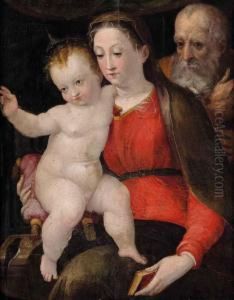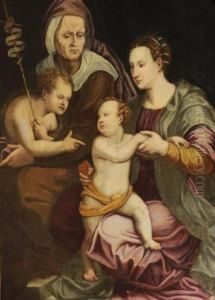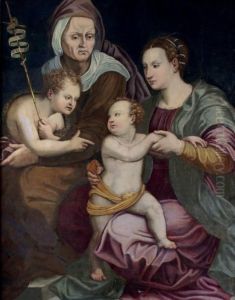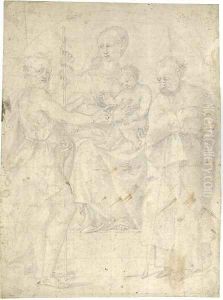Francesco Menzocchi Paintings
Francesco Menzocchi, also known as Il Menzocchi or Franceschino, was an Italian painter during the Renaissance period, born in 1502 in Forlì, a city in the region of Emilia-Romagna. He was a prominent figure in the artistic scene of the mid-16th century in Italy, although today he may not be as widely recognized as some of his contemporaries.
Menzocchi was known for his religious paintings, altarpieces, and frescoes, which often displayed a balanced combination of the traditional styles of the early Renaissance with the emerging Mannerist aesthetic. His work was characterized by its precise draftsmanship, clear compositions, and the gentle, sweet expressions of his figures, which were often bathed in a soft, glowing light.
Having been trained in the workshop of Girolamo Genga, Menzocchi developed a style that was influenced by the works of other masters such as Raphael and Andrea del Sarto. Throughout his career, Menzocchi worked for various patrons, including the Dukes of Urbino, for whom he completed numerous commissions. His works can be found in several churches and museums across Italy, and they continue to be studied for their contribution to the transition between Renaissance and Mannerist art.
Francesco Menzocchi's sons, Pier Paolo and Francesco jr., also became painters, though they did not achieve the same level of recognition as their father. Menzocchi's work was appreciated during his lifetime, and his influence extended to his region and beyond. He died in 1574 in Forlì. While he might not be a household name, Menzocchi remains a respected artist among those who study the nuances of 16th-century Italian painting.



